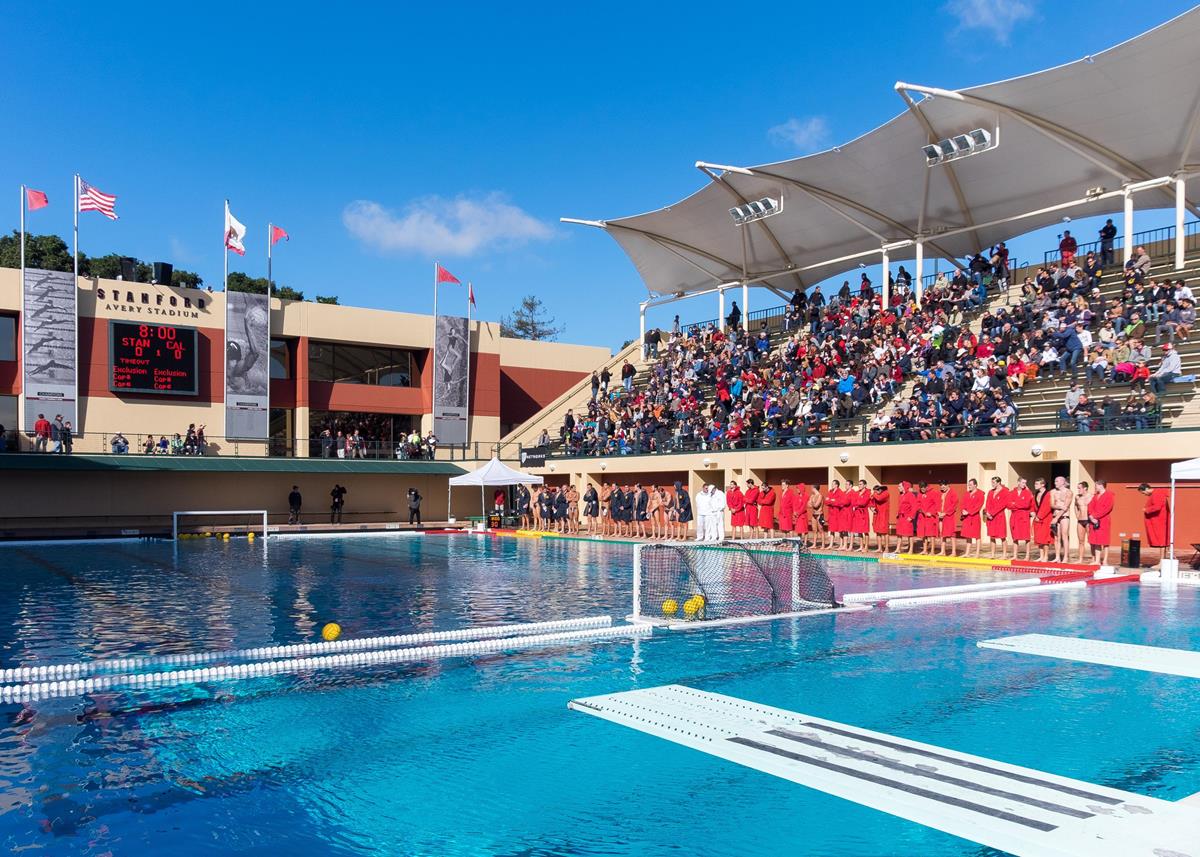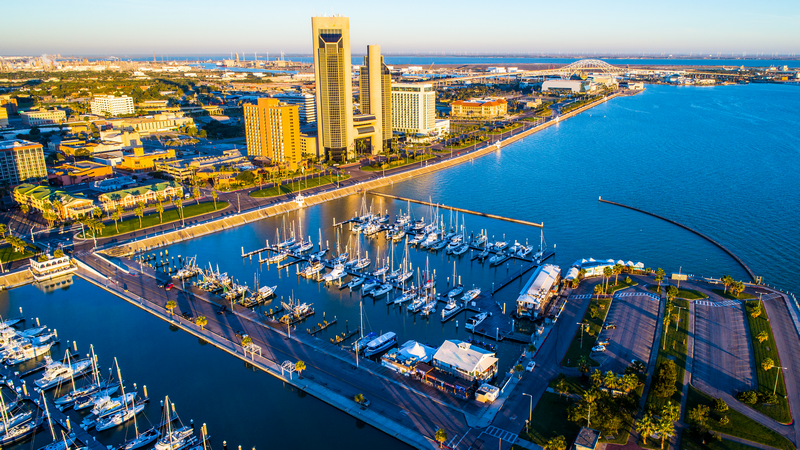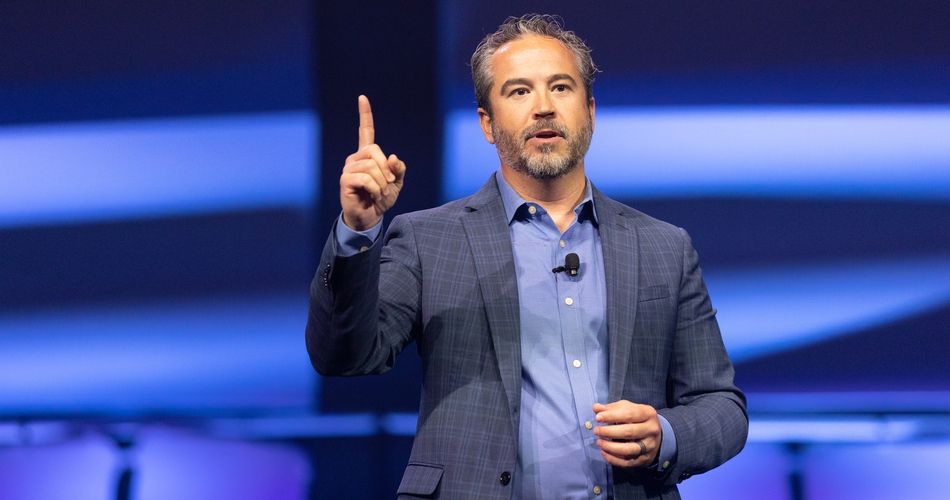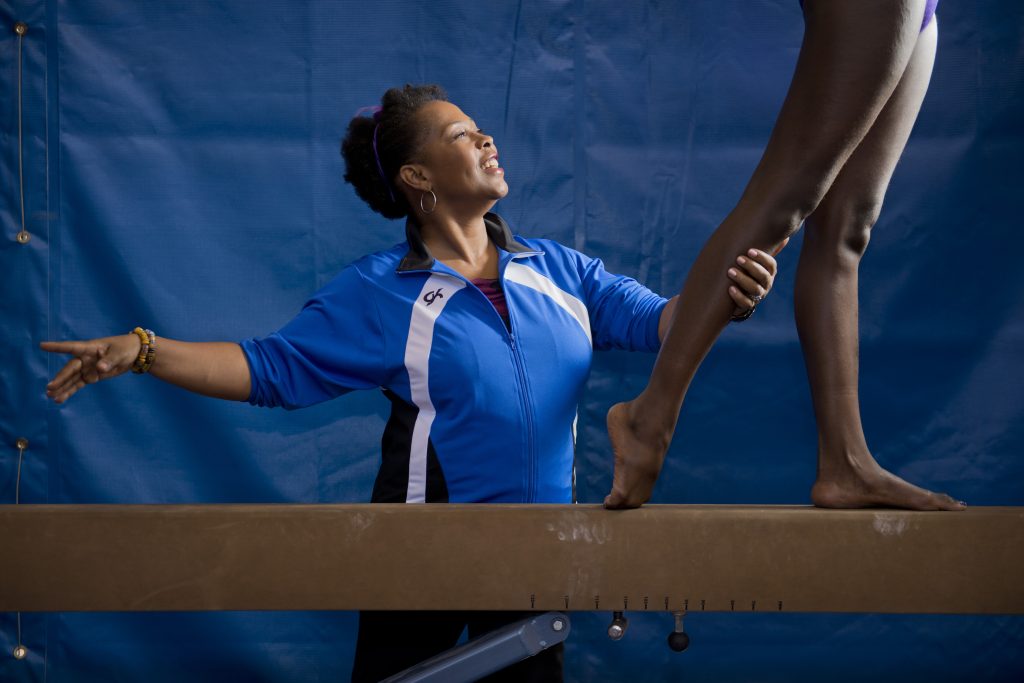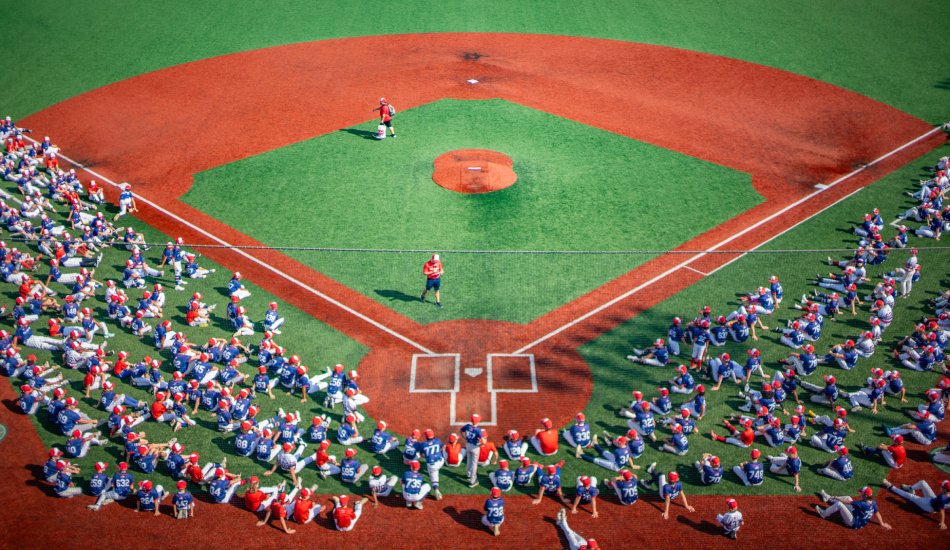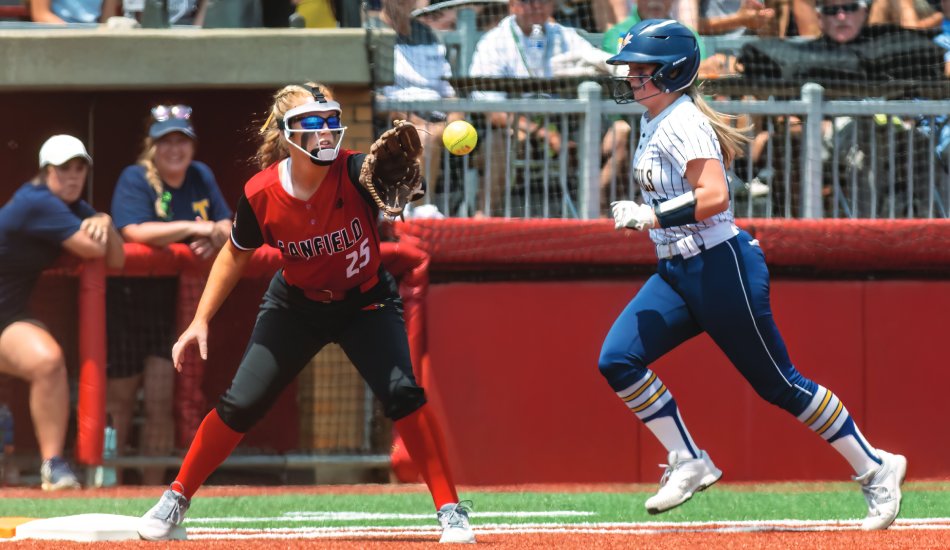Certain sports, like baseball for example, compete in structures that inspire widespread praise or sweeping mockery.
Whether the populace is praising Wrigley Field’s allure or disparaging Philadelphia’s unsightly and now-defunct Veterans Stadium, its voice is heard frequently and fervently.
Aquatic centers, on the other hand, do not inspire the same public discourse, although perhaps they should.
Those immersed in the swimming community say each center has a unique feel, and the thrill of competing in this country’s finest facilities rivals that of stepping into any sporting cathedral.
With so many marvelous complexes residing in every region, it’s difficult to determine which are the best in the country. That said, Sports Planning Guide did its due diligence and decided on what we believe are 10 aquatic centers every swimming fan should visit before they expire from this mortal coil.
1. IU Natatorium (Indianapolis, Indiana)
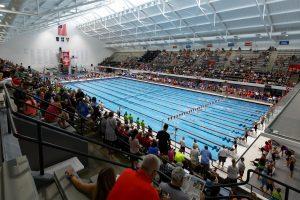
Credit: IU Natatorium
Located on the campus of Indiana University-Purdue University Indianapolis, the IU Natatorium is the biggest permanent swimming facility in the country and, arguably, the most renowned.
Since opening in 1982, the 4,700-seat pool (with space for 1,500 more spectators on the deck) has witnessed 104 American records and 15 world records set on its premises. It has also been the host for 13 men’s and women’s NCAA Championship meets, 13 Olympic team trials in swimming, diving and synchronized swimming, and the 1987 Pan Am Games.
The 220,000-square-foot facility has two 50-meter pools with the main competition pool sporting eight racing lanes. The main pool also has six underwater windows which are beneficial for television coverage and coaching analysis.
The Natatorium is rich with history, but it also sports a modern feel thanks to $20 million worth of renovations that were finished in 2016. The completed work includes a roof replacement, widened diving towers to meet synchronized diving standards, updated locker rooms and the installation of new starting blocks.
About Indianapolis: The capital of Indiana is the 14th largest city in the United States. It has established itself as a sports center that is home to the Indianapolis Speedway, the NBA’s Indiana Pacers, the NFL’s Indianapolis Colts, the NCAA headquarters and the NCAA Hall of Champions.
2. Lee and Joe Jamail Swim Center (Austin, Texas)
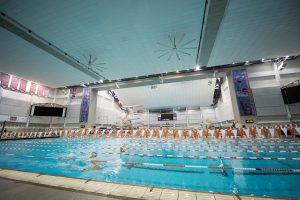
Credit: Lee and Joe Jamail Swim Center
Austin may be a cosmopolitan city that loves art, barbecue and football, but it is also home to one of the finest aquatic centers in the country.
The Lee and Joe Jamail Swim Center on the University of Texas campus has hosted some of swimming’s most prestigious events, including Grand Prix competitions, Nationals, Junior Nationals, Olympic Trials and NCAA Championships. The center also houses the Texas Swimming and Diving Hall of Fame and the University of Texas’s collegiate swimming and diving teams.
Built in 1977, the center offers seating for 1,800 spectators with about 1,100 additional portable folding bleacher-type seats available on the deck. The main pool is 50 meters long by 25 yards wide, is 9 feet deep and was modeled after the pool used in the 1972 Olympic Games in Munich, Germany. It holds 880,000 gallons of water and is considered one of the fastest pools in the world because of its depth and lane width. The diving well is 25 yards long by 25 yards wide and reaches a depth of 18 feet and holds 660,000 gallons of water.
About Austin: Located in Central Texas, Austin is the state capital and is consistently ranked one of the finest destinations in the country. Known for its quality barbecue and vibrant music scene, the city draws more than 24 million annual visitors and hosts numerous popular national events including South by Southwest and the Austin City Limits music festival.
3. Avery Aquatic Center (Palo Alto, California)
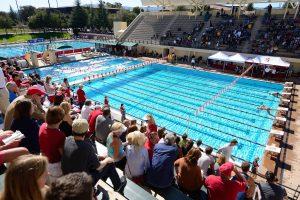
Credit: Avery Aquatic Center
Considering California weather tends to gravitate toward the spectacular side of the ledger, it’s no surprise the Avery Aquatic Center sports an outdoor swimming area that is the envy of many.
The home of Stanford’s aquatics teams opened in 1972 and underwent an extensive renovation and expansion beginning in 1999. In its current form beginning in 2001, the center has been home to a multitude of NCAA individual and team champions and is considered among the best outdoor swimming and diving facilities in the country. It has hosted the 2004 and 2008 USA Olympic swimming team prior to the Olympics, the 2004 and 2011 summer Junior and Senior Swimming Nationals and the 2006 FINA Masters World Championships, featuring 7,200 athletes from 75 different countries.
The center has four separate pools, with the primary one being the competition pool, which is 37 meters long, 20 meters wide and is considered one of the fastest pools in the nation. Up to 2,530 patrons can watch athletes performing in the competition pool. Complementing that pool is the Maas Diving Center, which features a concrete dive tower with platforms at 1, 3, 5, 7.5 and 10 meters. With the addition of nighttime lighting, events can be held after the sun goes down.
About Palo Alto: A small city on the peninsula south of San Francisco and adjacent to Stanford University, Palo Alto is home to hundreds of Silicon Valley technology companies. Natural beauty abounds as the 1,940-acre Baylands Preserve is a fabulous place to hike, bike and bird watch. With San Francisco less than 30 miles away, Palo Alto’s location is among the most revered in the country.
4. Jean K. Freeman Aquatic Center (Minneapolis, Minnesota)
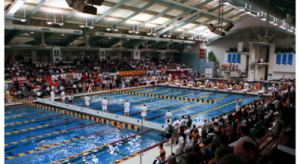
Credit: Jean K. Freeman Aquatic Center
Nearly two acres in size, the Jean K. Freeman Aquatic Center was built in 1990 to meet Olympic standards.
As a result, the eight-lane, 50-meter competition pool and 55-foot diving well on the University of Minnesota campus has hosted more than 20 NCAA championship meets along with numerous national and international competitions and state high school championships. It also has a full schedule of recreational sports for the campus and community and reportedly more than five million people have swum there since its opening.
The 25-yard-by-55-foot diving well offers 1, 5, 7.5 and 10-meter diving platforms and in addition to the 1,346 seats in the center, there is room for 1,200 temporary bleachers for patrons to cheer on the competitors. In 2005, the center added a new 21-foot-by-10-foot state-of-the-art video display system that is the largest permanent video installation in an aquatic facility in the country.
While the pool area boasts plenty of technology to help athletes perform at their best, they can also swim in comfortable natural lighting thanks to skylights running the length of the ceiling.
About Minneapolis: The first thing that comes to mind when thinking about Minnesota is probably its chilly winters. What should come to mind is its fabulous cuisine (don’t forget to try a Juicy Lucy cheeseburger), its arts and culture scene and the fact it is home to professional teams in all four major sports.
5. Herb McAuley Aquatic Center (Atlanta, Georgia)
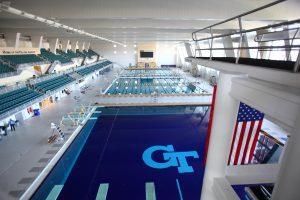
Credit: Herb McAuley Aquatic Center
Built for the 1996 Summer Olympic Games in Atlanta, the Herb McAuley Aquatic Center seats 1,950 and features a 10-lane, 50-meter competition pool and a diving pool. During the Olympics, the venue hosted swimming, diving, synchronized swimming and water polo events.
The competition pool is considered one of the fastest in the country because of its depth and wide lanes and has hosted numerous non-Olympic events including Atlantic Coast Conference and NCAA swimming and diving championships. The diving pool features a Sparger system that propels bubbles from the bottom of the tank to ease competitors’ water entry.
The $21 million facility located on Georgia Tech’s campus also offers a 184-foot water slide, a group spa and a leisure pool that consists of six 25-yard lanes. Home to the Georgia Tech swimming and diving teams, the pool is also used for classes, clubs and recreational swimming. Connected to the front of the center is a 15,000-square-foot fitness center that features racquetball courts, a climbing wall, classrooms and office suites.
About Atlanta: With more than 35 million visitors per year, Atlanta is among the most popular vacation destinations in the country. The city is renowned for its diverse food scene, and attracts visitors with a healthy slate of museums, historical sites, parks and festivals. The city is also home to the Coca-Cola museum.
6. Greensboro Aquatic Center (Greensboro, North Carolina)
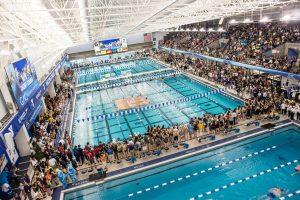
Credit: Greensboro Aquatic Center
The $19 million, 78,323-square-foot Greensboro Aquatic Center opened in 2011 and is acclaimed for being a state-of-the-art venue that has transformed Greensboro into a swimming nerve center.
Located on the campus of the Greensboro Coliseum Complex, a venue that hosts numerous sporting events and concerts, the GAC contains three bodies of water, a competition pool, a warm-up pool and a diving well. It also features a 2,500-person seating capacity and fully meets NCAA and International Swimming Federation standards, allowing Greensboro to host high school, college, USA Swimming, Master’s swimming and U.S. Water Polo events.
The pool reportedly has already surpassed $100 million in economic impact for Greensboro and has resulted in filling more than 85,000 hotel rooms. That figure will continue to grow as the Greensboro Coliseum Complex was named the site for six future NCAA Championship events beginning in 2019, including Division I women’s swimming and diving and Division I men’s basketball.
While the GAC has proven more than capable of hosting major events, it is also a community pool that is open to the public all year and has a community outreach program that teaches second-graders how to swim. Because of this heavy demand, the GAC operates for 15 hours per day.
About Greensboro: Centrally located in North Carolina, Greensboro is the third largest city in the state. It features many attractions including a water park and an art museum. For those who like barbecue, Greensboro has more than its fair share of delicious options, as does the entire state of North Carolina.
7. McCorkle Aquatic Pavilion (Columbus, Ohio)
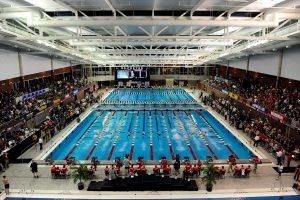
Credit: McCorkle Aquatic Pavilion
Home to the Ohio State University men’s and women’s swimming and diving teams, the McCorkle Aquatic Pavilion is considered one of the best, and fastest, competition pools in the nation.
The pavilion was dedicated in 2005, replacing the previous aquatic center, which was dedicated in 1931, as part of a $150-million Recreation and Physical Activity Center project on the campus.
McCorkle is home to a 50-meter competitive pool, a 4,638-square-foot diving pool, a dive spa and seating for 1,400 spectators. The pool’s new technology, coupled with its wide lanes and deep gutters, helps reduce waves and enables swimmers to attain speedier times than at most pools.
The complex also houses three championship water polo courses and holds nearly 1.56 million gallons of water. It has hosted numerous high-end competitions including men’s and women’s Big Ten championships, men’s and women’s NCAA championships, USA Swimming international meets and World Cup Team Trials.
About Columbus: The largest city in Ohio and 15th biggest city in the country, Columbus is a college football hotbed thanks to its feverish love of the Ohio State Buckeyes. Columbus also has numerous features of interest like the State Capitol, the German Village, a botanical garden and various museums.
8. Weyerhaeuser King County Aquatic Center (Federal Way, Washington)
Constructed in 1990 for a cost of $18.8 million, the Weyerhaeuser King County Aquatic Center hosted the Goodwill Games that year.
Since then, it has accommodated the U.S. Olympic Diving Team Trials, NCAA championships, Pac-12 Conference championships, USA Swimming winter national championships and the Speedo Junior National Championships.
More than 200 world records have been set at the 2,500-seat facility that features one of the most active competition schedules in the country, hosting more than 50 events annually. A recent economic study conducted for King County measured the financial impact of these events on the region in excess of $7.5 million annually.
The center houses an Olympic-sized competition and training natatorium that is suitable for swimming, diving, water polo and synchronized swimming. It also has a 25-by-15-yard recreational pool featuring a pirate cove that’s open to the public for family swims and swimming lessons. A banquet hall that seats up to 400 people is also located inside of the facility.
About Federal Way: A coastal city inside the Seattle metropolitan area, Federal Way is the ninth largest city in Washington. It features a Pacific Bonsai Museum and a botanical garden and is located about 22 miles from Seattle, where travelers can enjoy some of the finest seafood in the country.
9. Denison Trumbull Aquatics Center (Granville, Ohio)
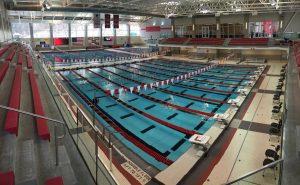
Credit: Denison Trumbull Aquatics Center
While most of the pools on this list reside on roomy Division I campuses, Denison University is a Division III school that has an enrollment of fewer than 2,300 students. That lack of bodies didn’t stop the university from building one of the most advanced aquatics facilities in the country.
The $20 million, 28,200-square-foot Denison Trumbull Aquatics Center opened in 2012 and is home to the school’s swimming and diving teams. The pool is part of a renovation project that improved upon a building that was constructed in the 1940s.
The center features a 50-meter-long, 25-yard-wide, Olympic-sized pool, a large diving well and a seating capacity of just over 750. The pool also sports a state-of-the-art timing system, two full-color video boards, a whirlpool spa and has the technological capability to enable coaches to film underwater.
As a result of these improvements, the facility has hosted the North Coast Athletic Conference Championships as well as the NCAA Division III Diving Regional. When it’s not being used competitively, the complex provides the campus community with recreational swimming opportunities.
About Granville: Granville’s population was less than 6,000 people according to the 2010 census. It is an old-fashioned New England-style town filled with unique architecture and an abundance of shops and restaurants.
10. Allan Jones Aquatic Center (Knoxville, Tennessee)
With permanent seating for almost 1,300 spectators and a deck area that can accommodate up to 2,000 additional patrons, the Allan Jones Aquatic Center has proven itself more than capable of hosting all types of major events.
Completed in 2008 at a cost of more than $24 million, the 72,000-square-foot facility is located on the University of Tennessee campus. The center features two indoor Olympic-sized 50-meter pools, two indoor diving wells and an outdoor 50-meter pool, giving it the unique luxury of sporting three full-sized 50-meter pools in close proximity.
With a depth of 10 feet from end to end, the competition pool is considered one of the fastest collegiate pools in the country and it has thus been utilized by some heavy hitters. In 2012, the center hosted the United States Olympic swim team before it traveled to the London Olympics. The facility also possesses a strength training center, sports medicine facility and a high-tech team room.
About Knoxville: A college town in Tennessee, the city had an estimated population of 185,291 in 2015. Knoxville is host to a tree-based zipline adventure park, a diverse community of artists and art galleries and multiple museums including the Knoxville Museum of Art.
A list of 10 barely scratches the surface
Certainly, the aforementioned aquatic centers are but a handful of marvelous facilities this country has to offer. Paring down our list to 10 pools was an arduous chore that resulted in the omission of several fine venues. If you would like to add any pools you think we’ve missed or wish to provide your thoughts on the pools we’ve highlighted, please share them in the comment section.

